Our Stories
A Darwin Christmas with Nina Fitzgerald and Ursula Raymond

For Nina Fitzgerald and Ursula Raymond, there’s nothing like Christmas in Darwin.
After living in Melbourne for the last eight years, Nina has returned home to experience the familiar sense of heavy rains, spectacular electrical storms and thunder during the wet season.
It’s a feeling the mother and daughter know all too well, with strong connections to their hometown both personally and professionally.
Nina was the Creative Director of Darwin Aboriginal Art Fair Foundation’s 2020 National Indigenous Fashion Awards, while Ursula is the Deputy Treaty Commissioner for the Northern Territory. Together, the pair are incredibly passionate about driving meaningful change for First Nations Peoples and celebrating the vibrant cultures that exist around us.
Here, we speak to Nina and Ursula on what they love about Darwin in December and the role fashion and art can play in empowering the community.
Photography by Helen Orr.
Nina Fitzgerald
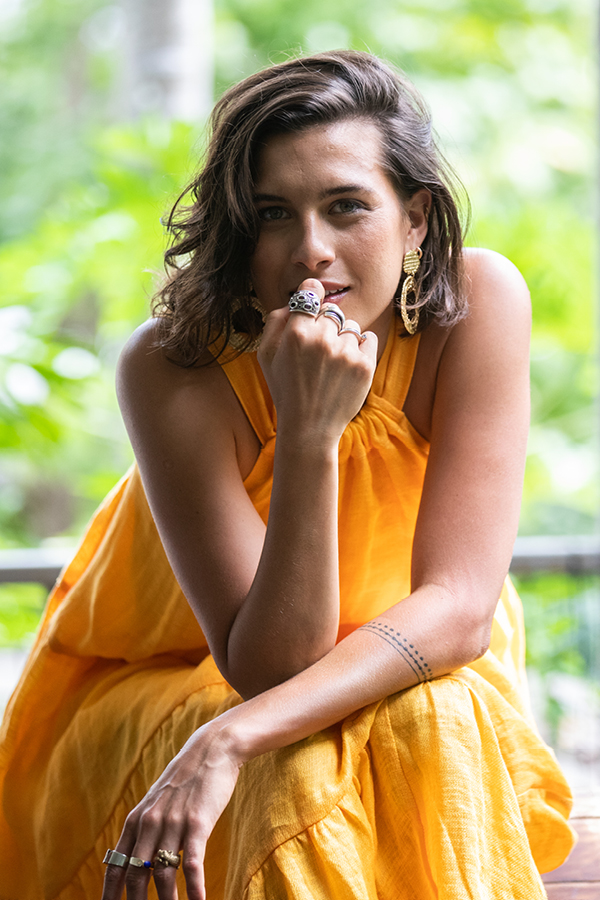
Hi Nina, can you begin by introducing yourself?
“I was born and raised in Darwin, before moving to Melbourne to study at Melbourne University.
I graduated with a Bachelor of Science, majoring in geography, mainly due to a keen interest in climate science and the future of the planet. However, my interests are broad and diverse, and since I was a child I’ve always been creative. I found the rigid structure of uni really challenging due to a lack of a sense of creativity. So after I graduated I chased down opportunities with more creativity and engagement across various fields. I have always loved and been interested in fashion, and I’ve been surrounded by Indigenous art my entire life—so naturally I have gravitated into that space.
Throughout my time living interstate, I was also increasingly aware and frustrated by the lack of understanding so many people had about Aboriginal and Torres Strait Islander peoples and our cultures. So often the truth of First Nations people in this country is completely overlooked. This has inspired me to help make meaningful change in this area— it still drives me today. I want to help teach people about the beautiful cultures we have in this country and help the next generations of First Nations Australians to have agency and thrive!”
You recently moved back to Darwin after a few years in Melbourne.
What led you home and how have you found it being back up north?
“Home has been calling for a couple of years now. I love Melbourne and am so grateful for everything I learnt there, and the incredible people I met along the way, but I have never had the feeling of home anywhere other than Darwin. It’s an incredibly special place for me, and it’s so nice being close to my family and oldest friends again.
Up here in the north life has a slower, more relaxed pace. The community is a friendly melting pot of diverse cultures and lived experiences. There is also lots of creativity and a wealth of opportunities that don’t exist in the same way in bigger cities. I also love the tropics— the cool breezy dry season days, then the massive monsoonal rains of the wet, and the contrasting landscapes these changes bring. It’s spectacular! We are so spoiled to have the most beautiful places to explore right on our doorstep, and I am stoked to be back amongst it all.”
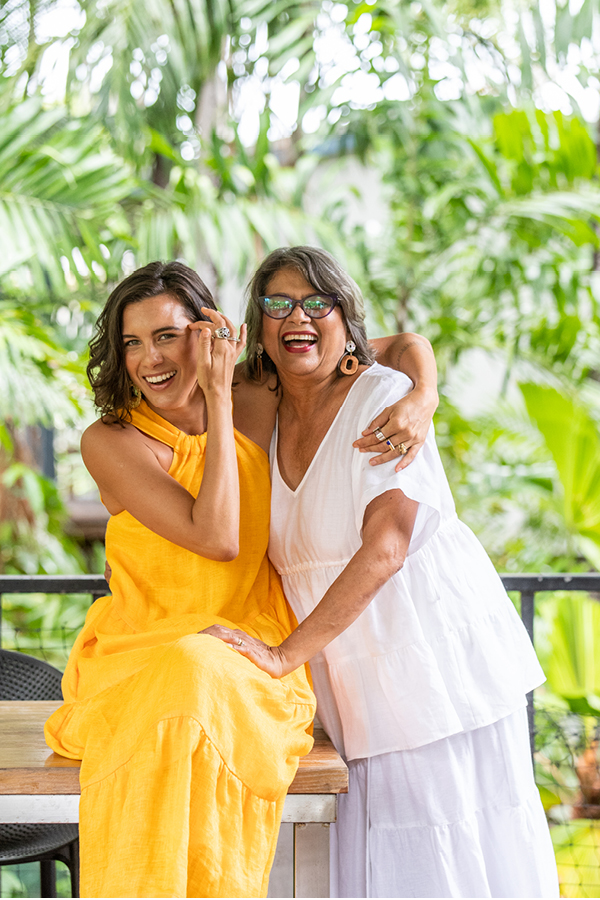
Your work has led you to spend time in remote communities connecting with artists. What do you love most about these experiences?
“Remote communities are some of the most incredible places in the country, pulsing with an energy you can’t find anywhere else in the world. There is so much negativity in the media, but in truth there is also so much beauty and happiness that is completely disregarded.
This year I spent some time working at the world renowned Buku-Larrnggay Mulka Centre, in the Yolngu community of Yirrkala, roughly 650kms due east of Darwin in North-East Arnhem Land. I grew up spending time out here and the magic of the Yolngu people and the vast untouched wilderness never ceases to amaze me. The white sand beaches and iridescent blue ocean lay in dramatic contrast to the deep reds of the earth and vivid greens of the bush. And ancient Yolngu songlines connect every feature of the landscape, from the tiniest pebble to the tallest gum, as well as each person, to one another in harmonious balance. Through these songlines Yolngu people can read the landscape down to the most subtle of changes. It is a remarkable knowledge system that still guides the day-to-day way of life…
While in Yirrkala I felt inspired every day. I laughed often, was constantly learning and ate food fresh from the land and seas. I love being transported to another time and world and to have been welcomed into this country by my incredibly generous Yolngu family is a privilege.”
What role can fashion and art play in raising cultural awareness amongst non-Indigenous Australians?
“Fashion reaches beyond socio-economic divides and is a medium that everyone engages with in some way, even in the most remote parts of the country. This unique ability to engage the masses is immensely powerful, lending fashion the ability to unite people in celebration of Australia’s rich heritage. It is an attainable and fun space for meaningful two-way learning between Indigenous and non-Indigenous people to occur.
Aboriginal and Torres Strait Islanders today represent a continuity and evolution of cultures that have existed since time immemorial. This in itself is monumental. But additionally whilst being inherently connected to this history and traditions, we are increasingly contemporary and incredibly innovative. This dynamism is what makes Australian Indigenous cultures so unique and exciting. Engaging with the growing Indigenous fashion and textile sector, and ethically elevating and highlighting the work of our creatives right across the fashion ecosystem, will enrich the very fabric that is the Australian fashion industry, as well as the myriad of creative industries to which it is intertwined. It is a way for the Australian fashion industry to be on the front foot and be an industry that is part of meaningful reconciliation and agency for First Nations Australians.
We are already starting to see the positive role the fashion industry can have in promoting and supporting First Nations Australia. The future is exciting!”
How will you spend Christmas this year?
“I will be on the deck with family and friends, hopefully enjoying a big monsoonal downpour! Christmas is for spending time together and eating delicious food. Being in Darwin is incredibly nostalgic for me and I am excited to be home this year.”
What is something you have learned from your mum that has shaped your outlook on life?
“As an adult I realise just how much my mum has taught me and continues to teach me every single day. She is fiercely honest and incredibly resilient; loyal to both herself and others, and never shying away from a challenge. She has built a life and career on her own terms. She is also very humble, happy to admit what she does not know and to learn. I am reminded by mum to take every opportunity, to believe in myself every day and to enjoy the journey as much as the end result. And to always have fun! I am so unbelievably grateful to have her in my corner and as the greatest support for all that I do.”
Ursula Raymond
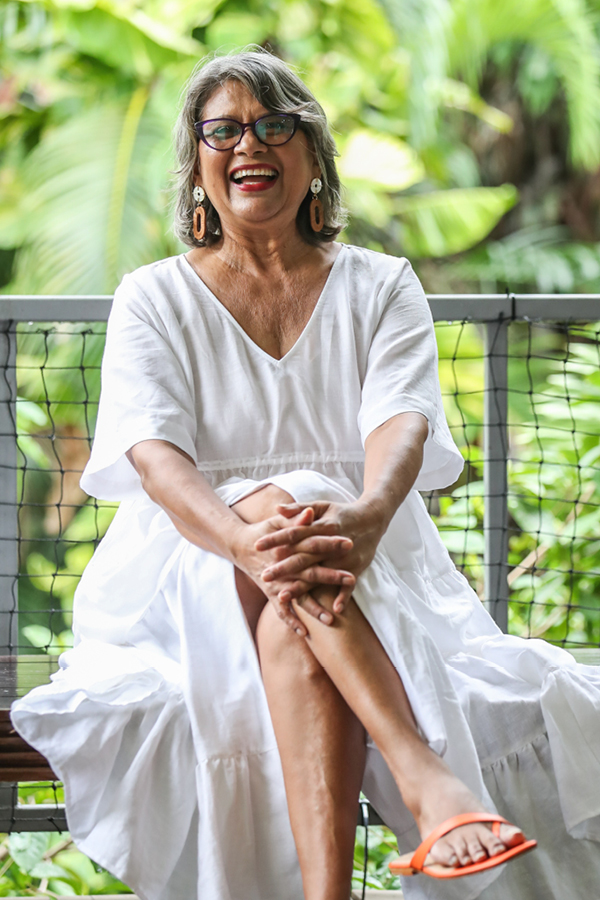
Hi Ursula, can you begin by introducing yourself?
“I was born and raised in Darwin and I still live here; I am both Aboriginal and Torres Strait Islander. I dropped out of high school after Year 11 but later returned to studies and graduated with a Bachelor of Arts degree from University of Melbourne in 1990. I loved living in Melbourne… working in the very strong Koori community in Collingwood was very welcoming and supportive. I also lived in Sydney in the early 2000s working at the ABC. For many years I worked with ABC Radio National as a broadcaster/producer/presenter on the Awaye! program covering issues across Indigenous art and culture – talking to First Nations right across Australia and the Torres Strait Islands. Following this I have worked in media roles within Aboriginal organisations, and as a ministerial adviser at both the federal and Territory level.”
Tell us about your role as Deputy Treaty Commissioner and the work you’re doing to consult communities across the Northern Territory.
“My job is to consult with First Nations people and communities across the Northern Territory to provide them with information on Treaty issues, and to ask them whether they would like a Treaty or Treaties with the Northern Territory Government. My job is not to negotiate a Treaty. The Treaty process in the Northern Territory has been established by the Northern Territory Government and the four major Aboriginal Land Councils (the Northern Land Council, Central Land Council, Tiwi Land Council, and Anindilyakwa Land Council).
Our consultations were on hold during the 2020 pandemic, but recently we have been able to consult in Central Australia and in north east Arnhem Land. My job ends in March 2022 when myself and Treaty Commissioner, Professor Mick Dodson AM, provide our final report and recommendations to the Chief Minister of the Northern Territory.”
What does this role mean to you and what do you ultimately hope to achieve?
“This is an incredibly significant role for two reasons. Firstly, it is the first time that a Northern Territory Government has agreed to embark on this process, hand in hand with First Nation Territorians. Secondly, the Northern Territory Government has acknowledged and agreed that Aboriginal people, the First Nations, were the prior owners and occupiers of the land, seas and waters that are now called the Northern Territory of Australia; they were self-governing in accordance with their traditional laws and customs; and they never ceded sovereignty of their lands, seas and waters.”
You were recently a judge at the 2020 National Indigenous Fashion Awards. What impact can events like these have on local Aboriginal and Torres Strait Islander communities?
“First Nations artists are storytellers. They use their arts practice to document the world around us, and to remind us what was here before our time and the importance of culture, law and ceremony. Fundamentally, First Nations adapt and learn new ways of engaging with their cultural practice which includes experimenting with new media. So they’ll take these events into their stride and use them as they see fit.”
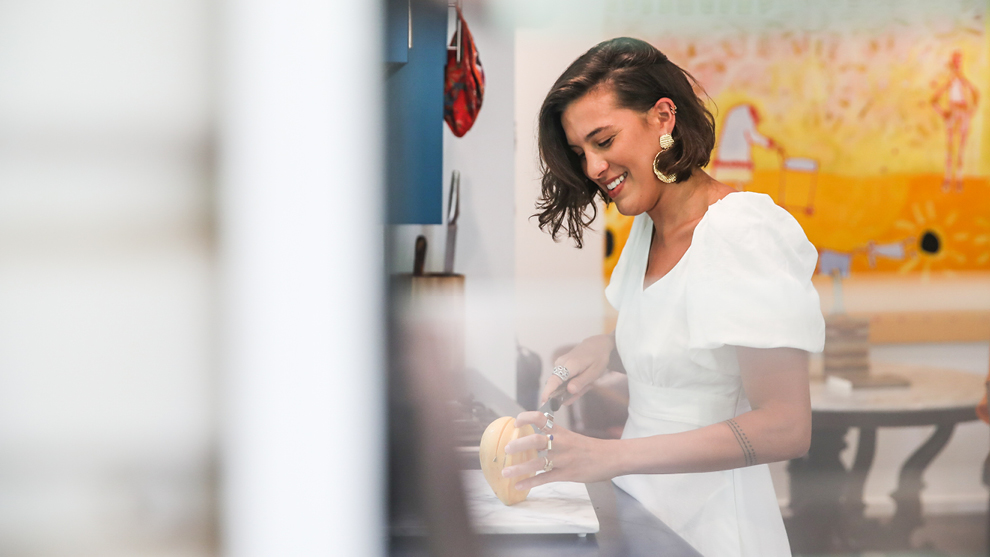
What has it been like having Nina home these past couple of months?
“I love having my girl home after her eight years in Melbourne! Nina has returned with a great broad view of the world, and she is amazingly comfortable in it. I love the way young First Nations people engage with the world around them…they are not afraid to stand tall and say ‘Look at me. I am here. I am not your native!’”
What do you love most about Christmas up north?
“Christmas in Darwin is usually very monsoonal with electrical storms, and lots of thunder and lighting. We call it our troppo season because we all go a little gaga with the heat and humidity before the monsoon arrives. It’s a spectacular time of year.”
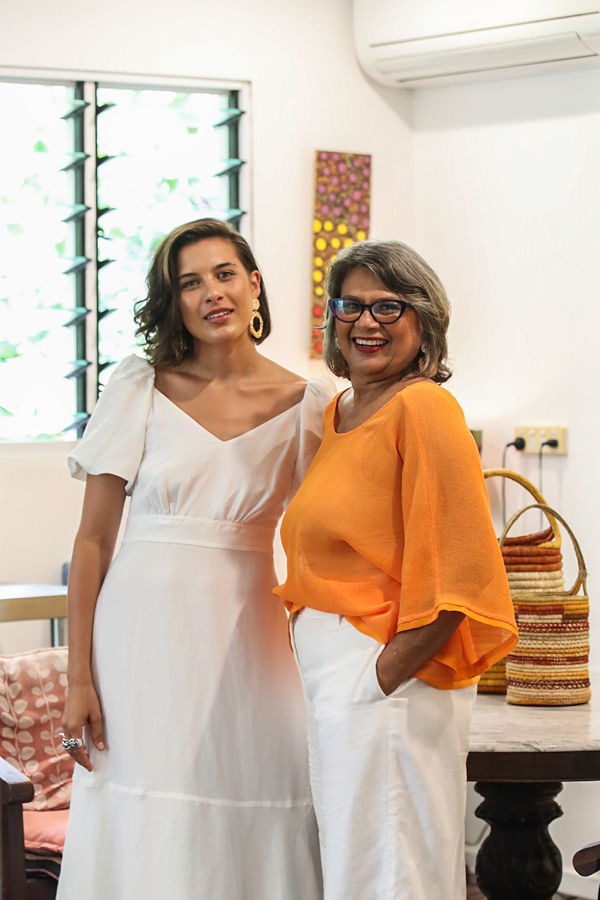
What does family mean to you?
“Family…they are the ones who will always be there when you need them. They will also be there when you don’t need them. I love my family.”
What lessons do you hope to pass onto your children?
“Take nothing for granted. The earth is fragile, and we need to take more care of it. The world is yours as much as anybody else's so take up space and live!”



